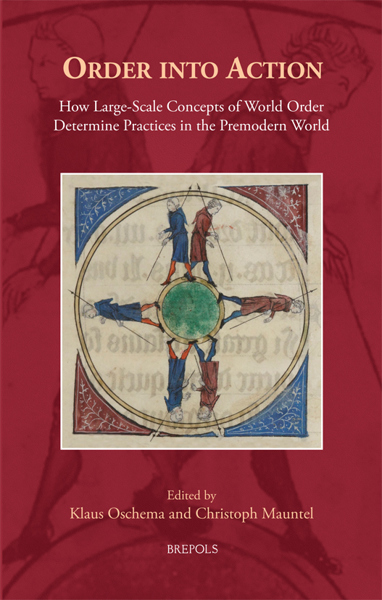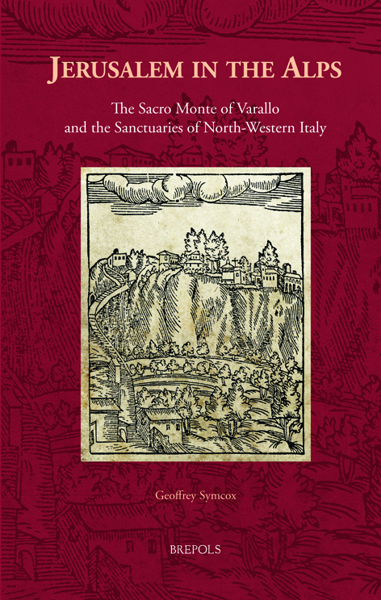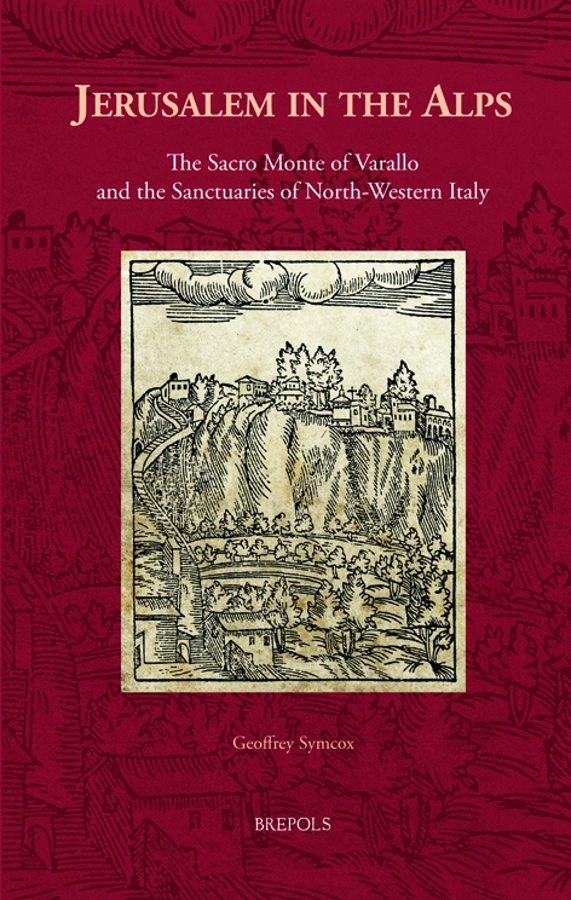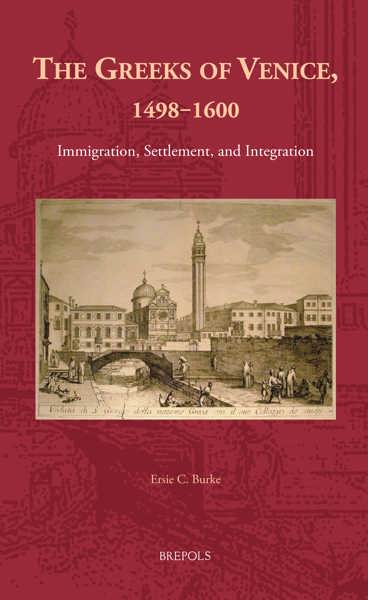
Jerusalem in the Alps
The Sacro Monte of Varallo and the Sanctuaries of North-Western Italy
Geoffrey Symcox
- Pages: xii + 310 p.
- Size:156 x 234 mm
- Illustrations:7 b/w, 50 col., 2 maps b/w
- Language(s):English
- Publication Year:2019
- € 95,00 EXCL. VAT RETAIL PRICE
- ISBN: 978-2-503-58057-9
- Hardback
- Available
- € 95,00 EXCL. VAT RETAIL PRICE
- ISBN: 978-2-503-58058-6
- E-book
- Available
Located in the Italian Alps west of Milan, the Sacro Monte (Holy Mountain) at Varallo are now recognised as monuments of unique artistic significance. This book explores the religious, social, economic, and political contexts of these sanctuaries.
“Insgesamt kann man sagen, dass sich die beiden hier besprochenen Publikationen von Symcox und Gentile erstaunlich gut ergänzen.” (Jon Mathieu, in H-Soz-Kult, 08/07/2019)
“(…) its combination of responsible scholarship and openly enthusiastic curiosity do make it a notable addition to the growing scholarly literature on a fascinating episode in early modern Italian spirituality.” (Kerr Houston, in The Medieval Review, 21.10.25)
“This book is valuable for bringing the scholarship of the Italian alpine sanctuaries to a wider audience in an accessible format.” (Nicholas Dean Brodie, in Parergon, 39/2, 2022, p. 171)
Geoffrey Symcox is Professor Emeritus in the Department of History at UCLA. He specialises in the history of Early Modern Italy, 1500-1800
The Sacro Monte (Holy Mountain) at Varallo is a sanctuary in the Italian Alps west of Milan. It was founded in the late fifteenth century by a Franciscan friar, with the support of the town’s leading families. He designed it as a schematic replica of Jerusalem, to enable the faithful to make a virtual pilgrimage to the Holy City if they could not undertake the perilous journey to visit it physically. The Sacro Monte consists of a sequence of chapels containing tableaux of life-size painted terra-cotta figures with fresco backgrounds recounting the life and Passion of Christ. A century later, in the era of the Counter-Reformation, a ‘second wave’ of Sacri Monti was constructed in the north-western Alps, modelled on Varallo, but dedicated to other devotional themes, like the Rosary or the life of St Francis. All these sanctuaries, like Varallo, were the result of local initiatives, initiated by the clergy and the leaders of the communities where they were situated. Like Varallo, they were the work of artists and craftsmen from the alpine valleys, or from nearby Lombardy. Long dismissed as folk art unworthy of serious critical attention, the Sacri Monti are now recognised as monuments of unique artistic significance. In 2003 UNESCO listed nine of them in its register of World Heritage Sites. This book studies their development as the products of the religious sensibilities and the social, economic, and political conditions of the mountain communities that created them.
Preface
Chapter 1. Samuel Butler Encounters the Sacri Monti
- Butler’s Intellectual Odyssey
- Butler Explores the Sacri Monti
- After Butler
Chapter 2. The Val Sesia. Society and Politics
- Geography and History
- Economy and Society
- Varallo
Chapter 3. The Foundation of the Sacro Monte of Varallo
- Bernardino Caimi, the Observant Franciscan
- Pilgrimage to Jerusalem
- The Act of Foundation
- Patronage: the Scarognini Family
- Caimi Takes Possession of the Sacro Monte
- Caimi’s Project
- The First Guide Book to the Sacro Monte
- Parallels
Chapter 4. The Sixteenth Century. From Gaudenzio Ferrari to Carlo Borromeo
- Political and Social Conflict
- Gaudenzio Ferrari and the Sacro Monte
- The Spectators’ Response
- Conflict between the Fabbricieri and the Observant Franciscans
- The Libro dei Misteri
- The Era of Carlo Borromeo
Chapter 5. The Seventeenth Century. The Era of the Counter-Reformation
- Patronage and Local Politics
- Bishop Bascapè
- The Expulsion of the Observant Franciscans
- Bascapè and the Artistic Development of the Sacro Monte
- Pilate’s Palace
- The Era of the D’Enrico Brothers
- The Basilica of the Virgin
- War and Plague
- The Rebellion of 1678 and its Aftermath
Chapter 6. The Eighteenth Century. The Val Sesia under the House of Savoy
- The Transfer to Savoyard Sovereignty
- Completing the Sacro Monte
- Enlightened Absolutism versus Ancient Privilege
- The Reformed Brothers Depart
Chapter 7. Varallo as Model. The Later Sacri Monti
- The Sacri Monti as a System?
- Orta
- Crea
- Oropa
- Ghiffa
- Varese
- Sacro Monte Calvario Domodossola
- Ossuccio
- Belmonte
- Graglia and Arona
- Similarities and Differences
Epilogue. Revolution and Restoration
Appendices
Bibliography




